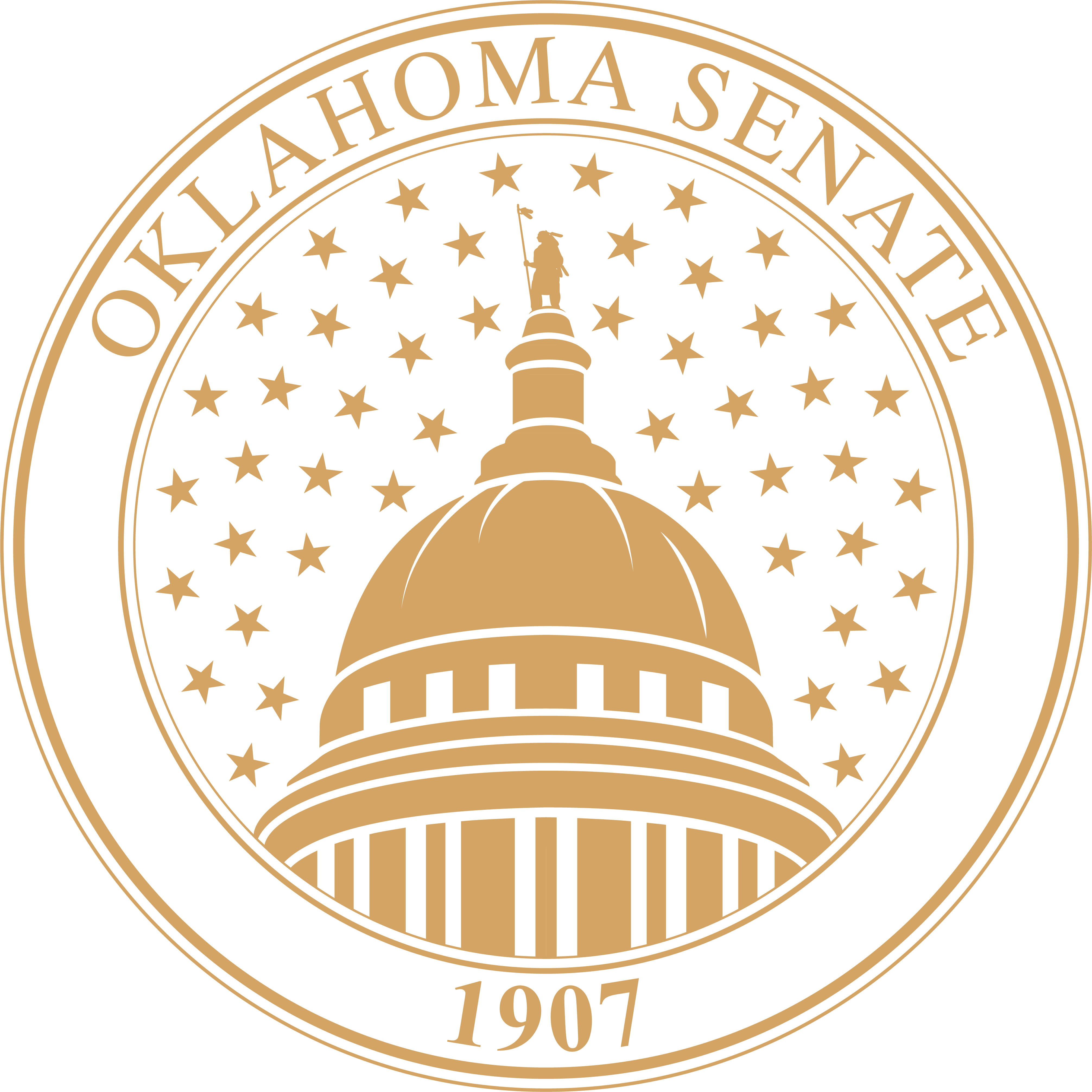In order to provide equal access and equal opportunity to people with diverse abilities, this site has been designed with accessibility in mind. Click here to view
Senate Leaders Unveil $750 Million Road Building Program
Infrastructure Investment to Create more than 21,000 New Jobs
Senate budget leaders have announced an extensive road building program that will double Oklahoma's highway construction budget and create more than 21,000 spin-off jobs in the process. The $750 million program employs a "lease-back" mechanism that will allow the state to build roads and highways immediately, but pay off the construction cost over a period of years.
"The plain truth is we don't have enough resources in hand to make all of the road improvements we need to make in a timely manner," said Senator Larry Dickerson, chairman of the Senate Appropriations Subcommittee on General Government and Transportation. "The lease-back option will allow us to make immediate improvements, and then pay for them over a period of time."
Economists estimate that the road construction efforts will create 21,700 spin-off jobs and spur $1.9 billion in overall industrial output in Oklahoma.
"This will be an immediate shot in the arm for our economy. We'll get short-term benefits from the jobs and investments related to the new construction, and long-term benefits from the kind of economic activity good roads and highways generate," added Senator Kelly Haney, chairman of the Senate Appropriations Committee.
The program would be a collaborative effort involving the Oklahoma Department of Transportation and the Oklahoma Turnpike Authority, with the OTA issuing 20 year bonds over three years to finance the $750 million construction cost. OTA would then lease the roads back to ODOT for free use by the public. ODOT would retire the bonds with the help of additional appropriations from the Legislature. The payments would be funded entirely by growth revenue in the state budget.
"We're trying to approach this like the private sector. If a business needed to make improvements in order to survive, but didn't have the cash on hand, it would seek out the investment capital it needed to get the job done. That's what we're doing," said Senator Keith Leftwich, vice-chairman of the Senate Transportation Committee.
"We have to improve our transportation infrastructure if Oklahoma is going to remain economically competitive. If we don't explore the lease-back option, the improvements won't be made. It's that simple," added Senator Dickerson.
The program would be distinct, financially and administratively, from the current operations of ODOT and OTA. For example, ODOT's standing five-year construction program would continue at its current funding level, although some of the slated projects may ultimately be absorbed by the lease-back program. At the OTA, the lease-back projects would be separate from the rest of the turnpike system, with the lease revenue segregated from other OTA funds.
"This is a creative way to improve our infrastructure quickly without siphoning funds away from other crucial areas such as education and public safety. The program will be funded entirely with growth revenue," noted Senator Haney.
Under the program, a road project would have to meet at least one of two specific criterion to qualify for lease-back funding:
- Expand the existing transportation system, either by building a new road or adding lanes to an existing one. Maintenance projects would not be eligible.
- Significantly improve highway safety (improvements on interchanges, roads with high number of accidents/fatalities).
So that all of Oklahoma would benefit from the lease-back program, the legislation would stipulate that the construction projects would have to be spread across the state in an equitable manner. For example, no more than 20 percent of the lease-back funds could be spent in any one of the eight state transportation districts.
"This is a plan to help all of Oklahoma, rural and urban. We're trying to make sure that all areas share in the economic growth that an improved transportation infrastructure will provide," said Senator Dickerson.
Senator Haney, meanwhile, stressed that it is crucial to act on the program this year in light of the decreasing amount of federal support for roads and highways.
"Last year, we increased the amount of state funding for highways, but by the time the U.S. Congress finished cutting our federal share of road money, we were almost back to where we started," noted Senator Haney.
"Like it or not, we're going to have to take up the slack of those federal cuts."
- 30 - Oklahoma Senate
Oklahoma Senate

